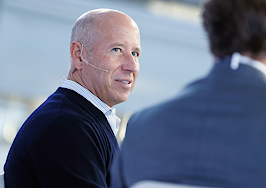In these times, double down — on your skills, on your knowledge, on you. Join us Aug. 8-10 at Inman Connect Las Vegas to lean into the shift and learn from the best. Get your ticket now for the best price.
First-time homebuyers need a significant pay bump from their counterparts a year ago to afford the typical starter home, as rising mortgage rates and home prices have significantly increased the price of homeownership.
The annual paycheck for a first-time homebuyer is roughly $64,500 to afford the typical U.S. “starter” home in 2023 — up 13 percent or $7,200 from a year ago, according to a report released Friday by Redfin. 
The typical starter home sold for $243,000 in June, 2.1 percent higher than June 2022 and 45 percent higher than before the COVID-19 pandemic. In addition, prices for starter homes continue to rise because so few are available, creating more competition for the houses.
A person looking to purchase a typical starter home in today’s market would have a monthly mortgage payment of $1,610, 13 percent higher than a year ago and nearly double the typical mortgage payment before the pandemic.
The report describes home searchers as between a rock and a hard place, with rents remaining elevated as well. The typical U.S. asking rent is just $24 shy of the $2,053 peak hit in 2022, according to Redfin.

Sheharyar Bokhari | Redfin
“Buyers searching for starter homes in today’s market are on a wild goose chase because in many parts of the country, there’s no such thing as a starter home anymore,” Redfin Senior Economist Sheharyar Bokhari said in a statement. “The most affordable homes for sale are no longer affordable to people with lower budgets due to the combination of rising prices and rising rates.
“That’s locking many Americans out of the housing market altogether, preventing them from building equity and ultimately building lasting wealth.”
Would-be homesellers who are reluctant to list their homes and lose their lower mortgage rates are also keeping inventory low, while their home values largely continue to increase.
“People who are already homeowners are sitting pretty, comparatively because most of them have benefited from home values soaring over the last few years. That could lead to the wealth gap in this country becoming even more drastic,” Bokhari said.
The story isn’t the same everywhere, however. In some cities that saw housing booms during the pandemic, the price of a starter home is less now than it was last year but remains significantly higher than it was pre-pandemic.
San Francisco, Austin and Phoenix are the only three cities where this has played out. In San Francisco, a homebuyer must earn $241,200 to afford the typical “starter” home, down 4.5 percent or $11,300 from a year earlier. In Austin, buyers must earn $92,000, down 3.3 percent year over year, while Phoenix buyers must earn $86,100, down about 1 percent.
Those same three cities have seen prices of starter homes decline the most, with median sale prices down 13.3 percent to $910,000 in San Francisco, 12.2 percent to $347,300 in Austin and 9.7 percent to $325,000 in Phoenix.













